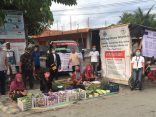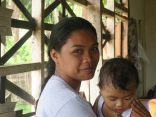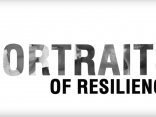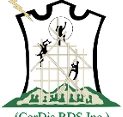“The sweetest reward is a resilient community.” This is how Mayor Evelyn Yu summarized her experience working with CARE and partners. She is the municipal mayor of Calabanga in Camarines Sur, a municipality that is frequently battered by strong typhoons.
Mayor Yu was first elected for the said position in 1998. Barely a few months into office, Typhoon ‘Loleng’ (Babs), categorized by PAGASA as one of the strongest tropical cyclones, hit the Philippines on October 21-26, 1998. It was also considered as one of the top five typhoons which caused the heaviest damage in Southern and Central Luzon.
Like any other Local Government Unit, the municipality of Calabanga did not give much attention to disaster preparedness and mitigation before. Their knowledge and experience was limited to the conduct of emergency response during a typhoon’s aftermath. Disaster reduction, mitigation and preparedness were still out of the picture.
When Mayor Yu was re-elected in 2004, four tropical cyclones (Unding, Violeta, Winnie and Yoyong) hit the Luzon area in a span of 18 days from November 16 to December 2. Typhoon Unding gravely devastated the Bicol region, including Calabanga and its poorest barangays along the coastal areas.
This devastating event motivated Mayor Yu to prioritize DRR, and started the partnership between CARE and the LGU of Calabanga. The partnership started through a CARE relief project, followed by DRR that built on the initial emergency response.
Mayor Yu is one LGU executive who immediately supported the follow-up DRR projects of CARE. She exhibited genuine interest for disaster preparedness as she sat all throughout the training sessions conducted for municipal officials and staff. She was very different from other officials who were only present during the opening activities.
She directly headed the development of the municipality’s contingency plan and actively participated in drills. She also joined the community as they planted mangrove seedlings along the banks of San Miguel Bay. She generously provided various kinds of support for the project, including the allocation of funding for all three phases of ACCORD.
On her third and last term as Mayor of Calabanga, she is confident that their community already has the capacity to handle emergency situations and carry-out measures to reduce disaster impacts. Towards the last stretch of the ACCORD projects, Mayor Yu fully supported the move to mainstreaming DRR and CCA in the local development planning processes in order to sustain what has been achieved in the last seven years.
Led by Mayor Yu, Calabanga earned the distinction of being the first municipality in Camarines Sur to have developed a municipal contingency plan that is linked community contingency plans..
The municipality is expanding and sustaining its successful mangrove reforestation activities in the coastal communities of Cagsao, Sibobo, Sabang and Punta Tarawal, and has started reforestation of upland areas, realizing the risk reduction and ecosystem services these reforestation activities provide. The mangrove reforestation, especially in Cagsao has earned so much recognition that it has become a learning and tourism destination. It has also opened new partnerships for similar undertakings and has been considered a favourite spot for outreach activities of various colleges and universities in Bicol. The project has also influenced other municipalities surrounding San Miguel Bay to replicate the said mangrove reforestation project.
Recognizing the link between disasters, climate change and environmental degradation, the municipal government has come up with resolutions supporting BDRRMC of Bgy. Sibobo’s opposition to quarrying in the barangay, and opposing the planned magnetite mining in San Miguel Bay. The municipality has also led the establishment of a fish sanctuary in San Miguel Bay.
The municipal government has consistently supported the capacity building of community facilitators as a means for sustaining DRR in the municipality. Now, community facilitators include the staff of their Sangguniang Bayan members, the Municipal Administrator, fire marshalls, health officers and staff, among others. They have replicated DRR capacity building of communities and schools not covered by the ACCORD projects.
Aware of the need to sustain DRR, Mayor Yu and other LGU officials are allocating funds for the replication of the ACCORD experience until all 48 barangays of Calabanga has been covered.
Earlier, the municipal government has been incorporating DRR activities in the Executive Legislative Agenda and allocating funds for these activities. In 2011, the municipality embarked on mainstreaming DRR in the rationalized Planning System.
(Insert ch 8 a.png)
As a partner in the Foor facility project, the municipality also gained experience in incorporating DRR in livelihoods, by applying DRR mainstreaming in project cycle management.
The municipality, through its DILG officer has also included DRR and solid waste management topics in regular orientation programs conducted for newly-elected barangay officials.
No one can doubt Calabanga’s achievements in terms of improving the DRR capacities of the communities. In fact, Mayor Yu has been invited in numerous national and international gatherings to share their DRR practice in Calabanga. Other municipalities also expressed their interest in learning from Calabanga’s experience by inviting members of municipal government to discuss DRR programs.
As a result of DRR mainstreaming, the municipality of Calabanga has been awarded the Gawad Kalasag, a recognition given to LGUs who exhibited good practices in DRR.
But according to Mayor Yu, while the awards make them doubly proud, they are still mere decorations. What they have learned cannot be bought by money. They key to sustained risk reduction activities is the raised awareness of the ordinary people – about preparedness and taking care of the environment. As such they have already been given the tools to help reduce the adverse effects of typhoons, floods, and storm surge that hit the municipality’s coastal barangays and, in more recent years, even the poblacion barangays.
“The best accomplishment is to be able to share to others what we have learned; to become instrumental in building more resilient communities in the years to come”.
That, for her is what mainstreaming is all about: to be able to have DRR into the consciousness of local executives and staff who take it upon themselves to govern for their people.




